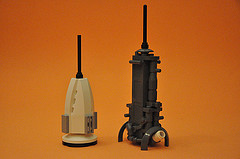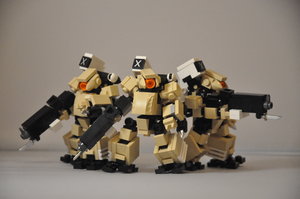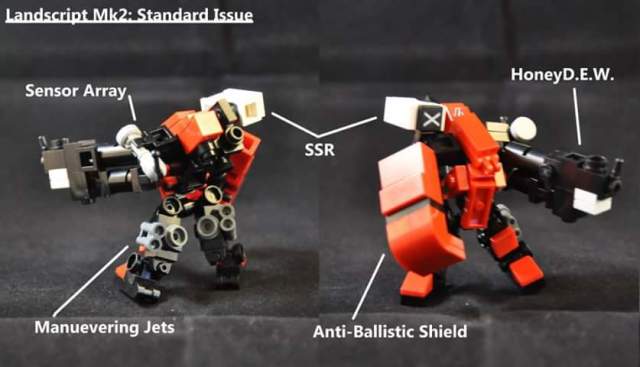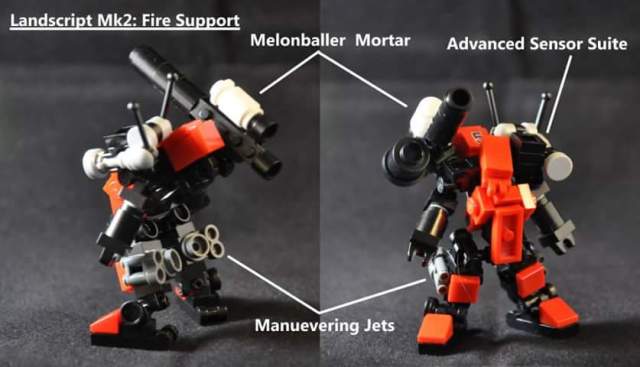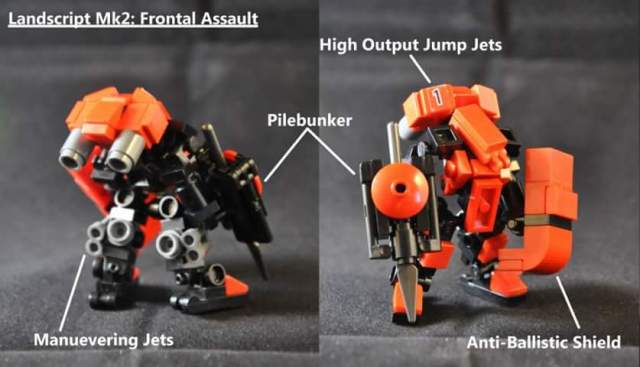There are four things a frame can do in a turn and each one’s effectiveness is determined by die rolls. Being able to give yourself the best odds at succeeding at those tasks means building each one of your frames to be efficiently optimized at its specific role.
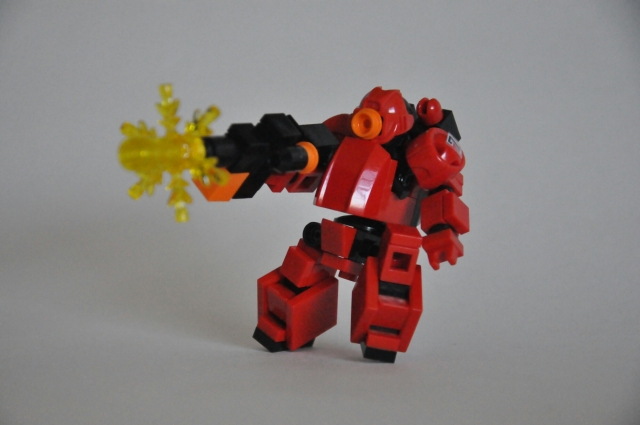
Before we start talking about optimizing your frames efficiently, let’s talk about playing efficiently for a moment. Since there are a limited amount of rounds in a game of MFZ and each frame only gets to activiate once per round, making the most out of each frame’s activation is the key to playing efficiently. Every activation you should be trying to move into a more advantageous position (moving into better cover, moving towards, defending, or capturing a station, putting pressure on an opponent to force them into a disadvantageous position, etc), defend, attack an enemy frame, and spot an enemy frame. If you can accomplish all of these things with every frame, every round, you’ll likely come out on top. To figure out what gives you the best odds to succeed at doing those things, we need to look at some numbers.
The following average results do not take into account using your white dice to replace rolls.
Single Weapon System: 4.47
Single Defense/Move/Spot: 3.50
Double Weapon System: 5.59
Double Defense/Move/Spot: 4.47
No Movement System with Sprint bonus: 4.50
Single Move with Sprint bonus: 5.28
Double Move with Sprint bonus: 5.59
You’ll notice that the single weapon system is the most effective single system due to the fact that it gives you two dice as opposed to all the other system’s single die. That means, from an efficiency standpoint, that every frame you have should have at minimum a single weapon system (there are exceptions to this. I’ll get to that later on). After the weapon systems, all of the three other system types give you equal odds, so grabbing one of each gives you the best overall odds at rolling well for all four stats. Add in your white dice to bolster the poor rolls and you have very high averages across the board as you aren’t relying on your white dice to supply you with any stat by themselves. This gives you the basic “soldier” loadout. Let’s look at how the numbers for a soldier pan out.
Direct fire: 4.47
Movement: 3.50
Defense: 3.50
Spot: 3.50
At first glance this may seem rather low, but remember that these don’t account for white dice being used to bolster lower rolls. Adding one white die to any category raises the average to 4.47, and adding a second raises it to 4.96. The fact that you can choose where to apply those dice after you roll means that they are always applied in the most efficient way, effectively giving you a 4.96 (or 5.24 in the case of the direct fire system) average on everything. That’s pretty darn efficient.
Having a backbone of soldiers in your company is extremely effective for playing efficiently, but only bringing soldiers is generally a bad idea. When you start building more specialized frames, it’s important to look at how removing or changing a system affects the effectiveness of the others beyond just looking at average rolls. For example, if you want an artillery specialist you could just swap the direct fire system for an artillery system and call it good, but that creates a problem. Your average rolls for spot may still be good, but it’s likely you won’t be in range to utilize them since you’ll want to hang back at artillery range. This gives you a couple of options. You could opt to drop the spot system all together and double up on another system. This can be a good move, but then it is even less likely that you will do all four actions each round, which is bad for efficiency. Or you can drop a movement or defense system for an additional spot system. This will make you reliant upon your white dice for neither defense or movement, but let’s you attack and spot from the other side of the table and increases your effectiveness at spotting (which is where the real damage comes from). I usually opt to ditch the defense system as a single system there doesn’t grant you any “non numerical” bonuses. A movement system will let you move over cover, so it’s more beneficial to have than a single defense. That leaves you with a single artillery, single move, double spot. Let’s take a look at what the numbers look like for this loadout.
Artillery: 4.47
Movement: 3.50
Defense (relying on a white die): 3.50
Spot: 4.47
Initially this looks fairly similar to the soldier as far as averages (which is good) but the only downside is that now you only have one white die to “float” to wherever it is needed. This gives you an effective average of 4.47 on move and defense and 4.96 on spot and artillery. Overall, this makes the averages slightly lower than the soldier, but you trade that for the capability to spot anywhere on the table. And in reality, the averages will be lower than that due to only one stat benefitting from that extra white die.
The important thing to note here is that your averages will drop whenever you don’t have a dedicated system. Let’s look at how having only two types of dedicated systems affects the numbers.
Here we have a double artillery, double spot frame.
Artillery: 5.59
Movement (relying on a white): 3.50
Defense (relying on a white): 3.50
Spot: 4.47
Here we’ve got really solid attack rolls and spot rolls, but the rest is really bad as you’re relying on a single white die for each with no chance of swapping out the bad rolls. You could decide not to move with this build, and it would up your defense average to 4.47, but then you’re unable to swap out any bad rolls on your spot or attack rolls as well. Basically the lack of floating white dice will really make you pay for any bad rolls that come up. This is the real penalty for over specializing.
One of the few times that not taking at least 3 different types of systems can still work out efficiently is when you involve SSRs and the Sprint bonus. Let’s look at an example of this.
This frame has double hand to hand, double defense, and an SSR.
Hand to Hand: 5.59
Direct Fire (with SSR): 4.50
Movement (sprint bonus): 4.50
Defense: 4.47
Spot (relying on a white die): 3.50
This frame is an assault frame, best used as the point frame of the primary attacker. Overall the averages are strong due to the sprint d8, and the doubled up systems. The SSR provides a way to dish out some damage (remember, efficiency!) while it closes in on its first target. It still only has one floating white die, but the stat most likely to suffer (the spot) is the least important for this build.
As you can see, building efficient frames is the first step in efficient play. Really looking at how the systems you select affects your dice rolls can improve your play drastically, and a lot of the time what seems like the most effective build is really sub par.
What have you found to be the most efficient frames for your play style?
*Note: I realize that some of the averages (especially involving floating white dice) are not 100% accurate. I’m not a mathematician or a stats guru, but the numbers provided are accurate enough for the comparisons above.

